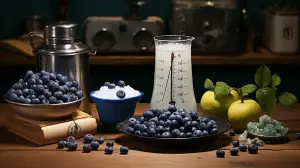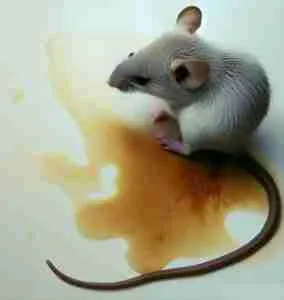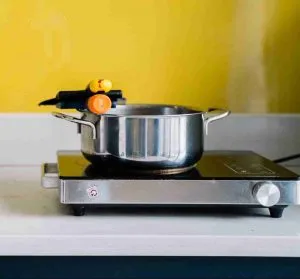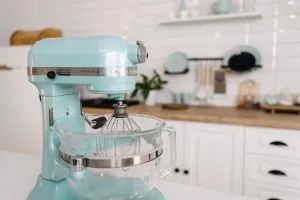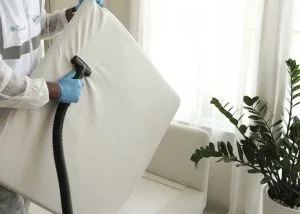Contents
ToggleKey takeaway:
- Choosing the right hose connector type is crucial when connecting two hoses together. Different connector types include threaded connectors, quick-connect fittings, and hose menders.
- Ensuring both hoses are of the same size is important for a secure and leak-free connection. Using hose clamps or hose connectors specifically designed for connecting hoses of the same size can help achieve a tight seal.
- Using the right tools and techniques makes connecting two garden hoses easy and efficient. Techniques such as lubricating the hose ends, aligning the connectors properly, and tightening them securely can ensure a reliable connection.
Introduction: The Challenges of Connecting Two Hoses Together
Imagine trying to connect two hoses together; sounds like a piece of cake, right? But hold on, it’s not as simple as it might seem. It’s like trying to piece together a jigsaw puzzle without the picture on the box. You need to figure out the right parts, check their compatibility, and ensure that once they are connected, nothing’s going to leak. Let’s break it down and see how to make this less of a puzzle.
First things first, you’ve got to get to know your hoses. What type are they? Garden hose, industrial hose? Check their sizes, are they the same or different? This information is crucial because it helps you find the right fittings or connectors that you’ll need to link them up. It’s a bit like trying to find the right charging cable for your phone; not every connector is going to fit.
Next, you’ll need to get your hoses ready for their big connection. This might mean cutting them to the right length or tidying up any worn-out ends. It’s important to make sure the hose ends are clean – no one wants debris messing up their connection!
Now you’re ready for the main event: connecting the hoses. You’ll need to attach your chosen fitting or connector to each end of the hose. Just pop the hose into the fitting and start tightening. But be careful, it’s a delicate balance between tight enough to prevent leaks and too tight that it damages the hose or fittings.
Once everything’s connected, it’s time to put your work to the test. Run some water through the hoses and check for leaks. It’s like a dress rehearsal for your hoses. If there’s a leak, don’t worry, make some tweaks to the fittings or connectors, and try again.
Remember, all hoses are unique in their own way and might have specific instructions or guidelines. So, when in doubt, check out the manufacturer’s manual or get an expert’s advice. Don’t be disheartened; with a little patience and understanding, connecting two hoses can become as easy as joining two dots.
Hose Connector Types

Imagine if your hose was a superhero – what would its superpower be? That’s right, the ability to connect to other hoses! But every superhero needs a trusty sidekick, and that’s where hose connectors come in. They’re like the best friend your hose never knew it needed. Let’s get to know them better:
| Connector Type | Description |
|---|---|
| Quick Connect | Allows quick and easy attachment and detachment of hoses, making it convenient for changing accessories or moving the hose to different locations. |
| Threaded | Features threads that screw onto the hose and provide a secure connection. This type of connector is commonly used for heavy-duty applications or when a tight seal is required. |
| Push Fit | Utilizes a push and lock mechanism to secure the hose. It is a simple and efficient connector type that requires no tools for installation. Ideal for use in lightweight applications. |
| Y Connector | Enables two hoses to be connected to one water source, allowing for simultaneous use or distribution to different areas. It is useful for tasks that require multiple hoses, such as watering large gardens or washing cars. |
| Coupling | A heavy-duty connector that combines two hoses end-to-end. Couplings often feature a male and female end, ensuring a secure and leak-free connection. |
These are your main characters, but remember, the world of hose connectors is full of other unique heroes ready to suit your specific needs.
And guess what? These heroes have quite a backstory. They’ve been around for ages, evolving in design and material to make your life easier. Now, they’re everywhere, playing a vital role in ensuring water flows smoothly for various tasks. So, the next time you’re out in the garden with your hose, remember its trusty sidekick, the hose connector, and the superpowers it brings to your everyday tasks.
Connecting Two Hoses of the Same Size
Joining two hoses of the same size? It’s as easy as pie! Just follow these four steps and you’ll have those hoses coupled up in no time.
- First, ensure the ends of both hoses are clean and in good shape. No one likes a muddy or damaged connection.
- Next, take your hose clamps and slide them onto each hose end. Think of them as the belts of the hose world.
- Now, take one hose end and pop it into the other, kind of like putting on a sock.
- Lastly, grab your trusty screwdriver and give those hose clamps a tighten. This will ensure a nice, tight seal and a happy, leak-free connection.
Just remember, always do a leak test before going full throttle with your newly joined hoses. Better safe than sorry, right?
Conclusion: With the Right Tools and Techniques, Connecting Two Garden Hoses is Easy and Efficient
And there you have it! With the right tools in your kit and the handy tips from our guide, you’ll find connecting two garden hoses is as easy as one-two-three. You’ll be twirling those hoses together like a pro in no time!
Remember, the devil is in the details. Our article not only walks you through the process step by step, but also gives you the extra bits of knowledge that make all the difference. Plus, the anecdotal history we’ve included brings the whole process to life, giving you both the confidence and context you need.
So, go forth and join those hoses together. You’ve got this!
Five Facts About How to Connect Two Hoses Together:
- ✅ If your backyard is big enough, there might be corners that are distant from the nearest tap, making it necessary to connect two garden hoses together. (Source: Team Research)
- ✅ There are two types of hose connectors that can be used to connect two expandable hoses: single-piece adaptors and double-piece adaptor kits. (Source: Team Research)
- ✅ Not all garden hoses are compatible with each other, so it’s important to consult a professional if you’re unsure about the type of hose connector you need. (Source: Team Research)
- ✅ To connect two hoses of the same size, you will need to find an appropriate adapter that fits the male connectors on both hoses. (Source: Team Research)
- ✅ When installing a new connector, make sure to use the right tools such as compression fittings, barbed fittings, or threaded fittings. (Source: Team Research)
FAQs
1. Can I connect two garden hoses to increase their reach?
Yes, if your backyard is large and some corners are beyond the reach of a regular extendable hose, you can connect two garden hoses together to extend their reach.
2. How do I connect two garden hoses of the same size?
To connect two garden hoses of the same size, you will need an appropriate adapter that fits the male connectors on both hoses. Simply screw the adapter onto the hose ends, making sure not to cross-thread it, and tighten with a wrench.
3. What types of connectors can I use to connect two expandable hoses together?
You can use either a single-piece adaptor, which allows you to join two hoses of the same type at the end, or a double-piece adaptor kit if you need to tackle a damaged end or reverse the direction of one hose’s “gender” or appearance.
4. Are all garden hoses compatible with each other?
No, it’s important to note that not all garden hoses are compatible with each other. If you’re unsure about the compatibility and which type of hose connector you need, it’s best to consult a professional before making any purchase.
5. What tools do I need to connect two garden hoses?
You will need an appropriate adapter, a utility knife to cut off any damaged hose ends, a screwdriver, a measuring tape or ruler to determine the hose diameter, and a wrench to tighten the connectors properly.
6. How do I ensure a secure connection and avoid leaks when connecting two hoses?
To ensure a secure connection, it’s important to hand-tighten the connectors and then use a wrench to tighten them further. This will help prevent leaks and ensure a reliable connection between the two hoses.
Additional Reading
In addition to understanding how to connect two hoses together, these resources provide broader knowledge about different aspects of lawn care and maintenance:
- How to Drain a Pool with a Garden Hose: This guide provides a step-by-step process for draining your pool using a garden hose. It can be a helpful resource when dealing with large amounts of water.
- What is a Brushless Lawn Mower?: Brushless motors are becoming more common in many devices, including lawn mowers. Learn about the advantages and how they work.
- How Often to Water New Grass Seed: For anyone looking to grow new grass, it’s essential to understand how often it needs to be watered. This guide provides detailed insights on the same.
- When to Aerate and Overseed Your Lawn: Aeration and overseeding can rejuvenate your lawn. Learn the best times to aerate and overseed to optimize grass health.
- What to Do When Your Lawn Sinks When Walking on It: If you’ve ever noticed your lawn sinking under your feet, this article explains why it happens and how you can fix it.








